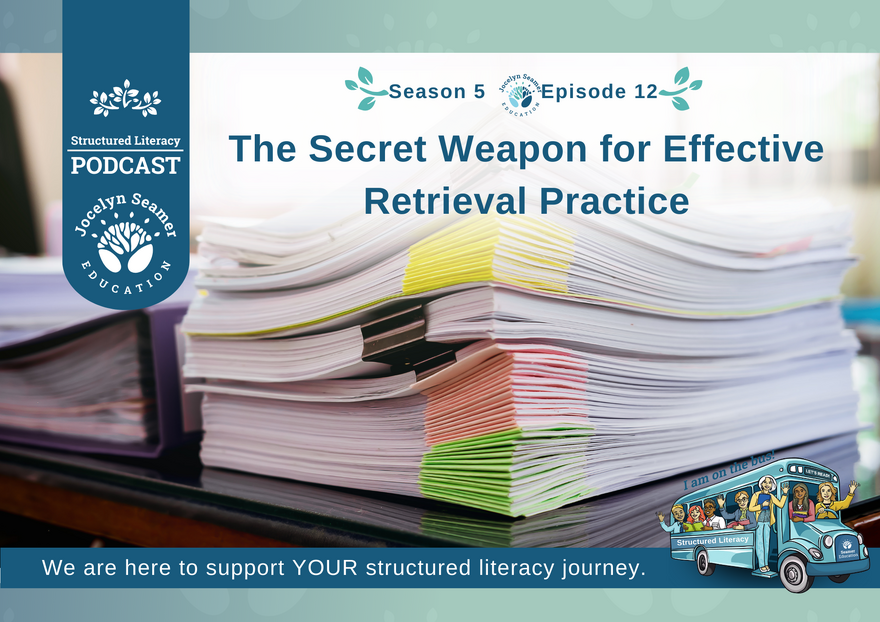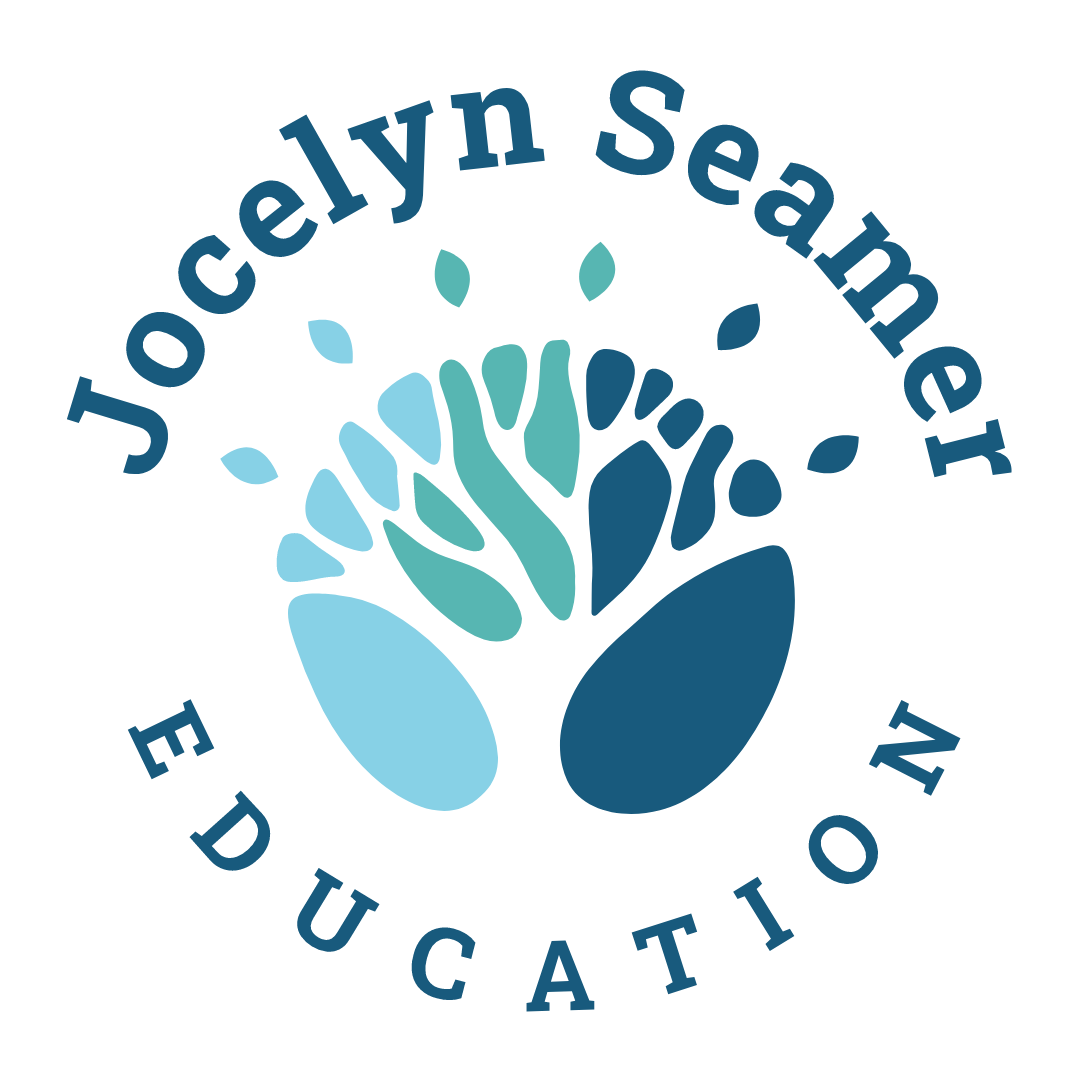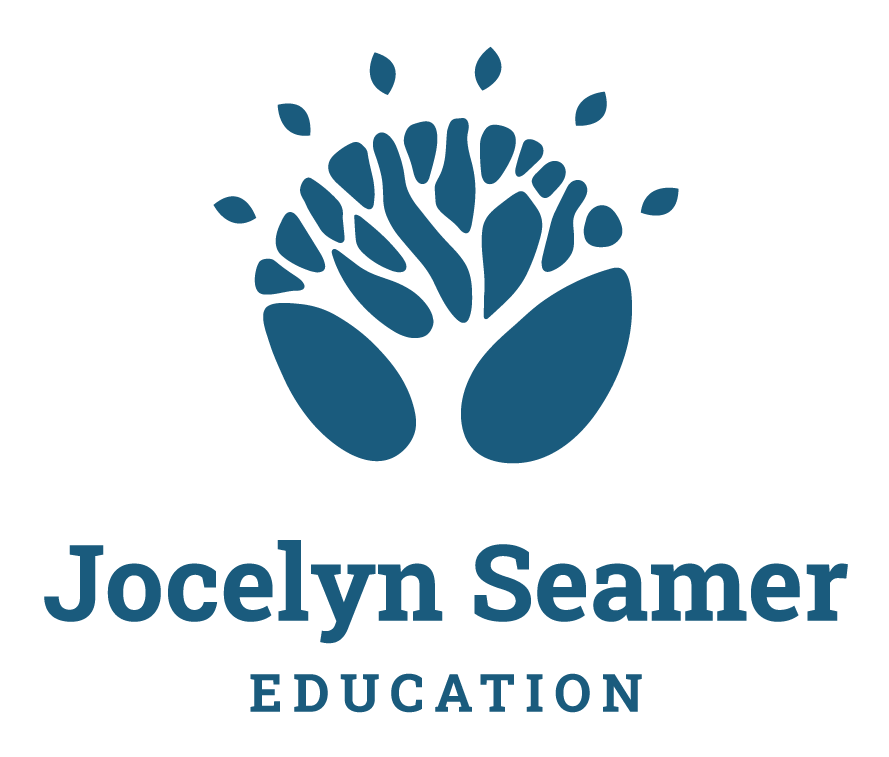S5 E12 - The Secret Weapon for Effective Retrieval Practice

Hello and welcome to the Structured Literacy Podcast. I'm Jocelyn and I'm recording here in Tasmania on the lands of the Palawa people.
In today's episode, I want to follow up on my previous Research to the Classroom miniseries where we explored retrieval practice and regular review to support student learning. If you haven't listened to that series yet, I'll link to it in the show notes.
Implementing Effective Retrieval Practice
Today I'd like to share some practical insights about how you can implement effective retrieval practice in your classroom, beginning the process of planning with what I call a Curriculum Organiser. For those of you who've been with me for a while now, you'll know that I'm always looking for ways to bridge the gap between research and the classroom, and this is one of those tools that has made a real difference in my own teaching.
For really strong retrieval practice to work, we need to know right from the start of our planning what our learning objectives are. Now that might sound obvious, but when we can clearly and simply articulate what we want students to know by the end of a unit, we set ourselves and our students up for success for the entire unit of work. One of the ways I've successfully done this in my own teaching is to use a simple knowledge organiser for every unit I taught. These organisers stated the key vocabulary with student-friendly definitions, included questions that could be used for retrieval or review throughout the unit (with the answers, so you're not searching for them when you need them), and they also noted the language functions and features that needed to be developed to enable students to effectively communicate their learning.
The Knowledge Organiser
Where did this idea come from? Well, the term Knowledge Organiser was coined by a teacher named Joe Kirby from the Michaela School in London. This school is known for a number of reasons, one of them being some controversial methods, such as having silent hallways, and the Principal has been called Britain's Strictest Principal. But much of what they talk about is simply responding to what we know about how people learn. We learn in calm, orderly environments, we learn when teaching and learning is direct and clear, and we learn best when we're able to review and revise what has been previously taught and learned. In 2015, Joe Kirby wrote a blog post called Knowledge Organisers, which I'll link to in the show notes, where he talked about specifying subject knowledge in great detail.
I also think it's a really good idea, and I extended mine out to be Curriculum Organisers by connecting to some other things. If we know what we want students to learn, if we know what good performance looks like, then we know how clear we need to be in our instruction. Curriculum Organisers provide wonderful clarity for teachers.
When I was working in leadership, I would provide new teachers with Curriculum Organisers that outlined the content that needed to be covered in instruction. Other than our school's instructional model, which was an explicit teaching model, I wasn't telling them exactly how to teach or requiring them to teach everything exactly as I would, but when it came to the content, they knew exactly what to cover and teachers were grateful for that clarity. Instead of spending hours trying to distill a broad amount of knowledge and skill into what they were going to teach, they had it right there in front of them and were able to take a shortcut. They knew what good performance looked like because it was articulated in the organiser, and they knew what students needed to know by the end of the unit.
Another benefit of Curriculum Organisers, particularly for older students in Years Five and Six and beyond, is that they can form part of a self-review and self-quizzing tool. Having specific questions and answers presented, along with a list of core facts and vocabulary helps students to know exactly what they need to focus on. But remember we're not asking them just to read these things over, they need to be used for retrieval.
Inside the Curriculum Organiser
Now let me give you a concrete example of what might go into a Curriculum Organiser. When I created these, I used a simple three-page format and not three full pages, there was plenty of white space, so it wasn't all overwhelming. We're also not talking about a 12-page document or a 20-page document for every unit. It's simply too much to manage and create.
The first page focused on vocabulary and concepts. So for a Year Three physical sciences unit on heat, I'd include student-friendly definitions of terms like heat, produced, transfer and motion. I'd also include vocabulary for experiments, those terms that come up again and again across the years, regardless of when you're teaching them or what the core content is. Words like observation were included. Then I'd list key understandings we wanted students to have, such as heat can be made in different ways, such as through friction, motion, burning or electricity. I'd include understandings about science as human endeavour and notes about the science skills the students would develop in that unit, such as making predictions and planning investigations. In this way, I made sure that I wasn't missing any of the key elements of the curriculum.
When we break things down like this, we can see just how much content there is to cover, and one of the things that makes teaching successful is when we clearly and purposefully work in a way that supports students' cognitive load. With a Curriculum Organiser, you can evaluate each element and think about what your students already know and what they still have to learn. The more knowledge and skills that need to be developed, the more carefully we need to consider cognitive load, because working memory is so easily overwhelmed. You as the teacher are in the best position to determine how to support your students' cognitive load. Having a one-pager with all the core concepts and skills really helps jumpstart the process of designing responsive instruction. It enables you to know what kinds of things should go into retrieval or review activities in the unit.
Page two of my Curriculum Organisers stated the elements of the achievement standard that needed to be addressed. This created a clear link between assessment and instruction and because I've taught many students with English as an additional language, I also included the language functions that needed to be taught. For me, one of the goals of instruction is to make every lesson a language lesson. Vocabulary is a huge part of that, but so is syntax. If we want our students to effectively and efficiently communicate their knowledge, we need to give them the tools and structures to do so. For the heat unit, I included three functions: Questioning, and giving the students sentence starters like "what will happen if..."; Predicting, with sentence starters such as "I predict that..." etc.; and Explaining, "through this investigation we have seen that...", or "the results of this investigation show that...".
Students often struggle to explain concepts, explain their thinking and draw connections between the two. So providing them with scaffolds to explain their findings helps them communicate more clearly. We all have to use some form of A to E grading in Australia, and these language structures can help you teach students the skills that help them move beyond the C, because part of what makes an A or a B grade is often how well the students can explain their thinking and in how much detail. So teaching these language structures to everybody simply makes sense.
When teaching in schools with high EAL populations populations, I also included notes about general grammar that we might need to teach, such as present tense, which is a feature of scientific texts, and common adjectives to facilitate description.
Finally, the third page contained a simple rubric based on the curriculum. This rubric had specific parts of the achievement standard listed and descriptors of what performance looks like from A to E, with clarification about the terms used. And remember that all the elements of these rubrics should be student-friendly so that they can learn to use this as success criteria.
So how does all of this relate to retrieval practice?
I hear you ask. Well, when you know what you want students to learn and what you want them to do and you have the simple questions and answers, you have your review written. And there are different levels of knowledge we're trying to build, it's not all about just memorising simple facts, but that's where it starts. Of course, we want students to be able to develop deep knowledge, to transfer this knowledge and the skills they've learned to solve problems. But if we don't develop that knowledge first, they are not going to be able to solve those problems and problem-solving tasks then become a nightmare. Retrieval practice begins with the basics, but it shouldn't end there.
If you take nothing else away from this episode, I really want you to hear me when I say, as teachers we need to be very clear on what we want students to learn and we need a mechanism to break everything down into small parts. As Rosenshine describes in his Principles of Instruction, break things down into small parts and teach them one at a time to mastery. We also need to link existing knowledge with new knowledge, which means we have to know what the student's existing knowledge is, not just assume it.
With a Curriculum Organiser, you're able to evaluate each item and determine what the existing knowledge is that the students have, so that you can make these links clear. And this will differ from class to class and school to school. So no program writer can create this for you and it just become a take and teach resource. Yes, we can help you with organising ideas, but you are the one who has the knowledge about your students.
Explicit teaching is about more than just delivering the program effectively and with fidelity. It's also about really understanding the components of instruction that make everything work. So when you're thinking about how to help your teams and students achieve even greater success, consider creating a Curriculum Organiser of no more than three pages, not with teeny tiny writing, but with reasonable size writing that doesn't hurt your eyes and lots of white space that makes it all feel achievable. If you do this for each unit you teach, you will then have what you need to have concise, strong, targeted teaching right from the start.
May the force be with you as you embark on this work of explicit teaching. I sometimes say that it's not rocket science, but when we think about it, there is complexity to learn. When we truly understand what it takes for students to learn and feel comfortable in their learning, we can engineer success for them and for us. And while every student has the right to learn using evidence-informed practice, every teacher has the right to have the help to make that happen. If that's what you're getting out of this podcast, I'm so pleased. Until next time, happy teaching everyone. Bye.
Show Notes:
S5 E9 Research to the Classroom - Connecting Reading and Writing - Part 1 (The Research)
S5 E10 Research to the Classroom - Connecting Reading and Writing Part 2 (Practical Application)
S5 E11 Research to the Classroom - Connecting Reading and Writing Part 3
References:
Kirby, J. (2015). Knowledge Organisers. https://joe-kirby.com/2015/03/28/knowledge-organisers/
Rosenshine, B. (2012). Principles of Instruction: Research-Based Strategies That All Teachers Should Know. American Educator. https://www.aft.org/sites/default/files/Rosenshine.pdf
Looking for resources and training to make teaching and review easier? Join us inside The Resource Room!


 Jocelyn Seamer Education
Jocelyn Seamer Education
0 comments
Leave a comment